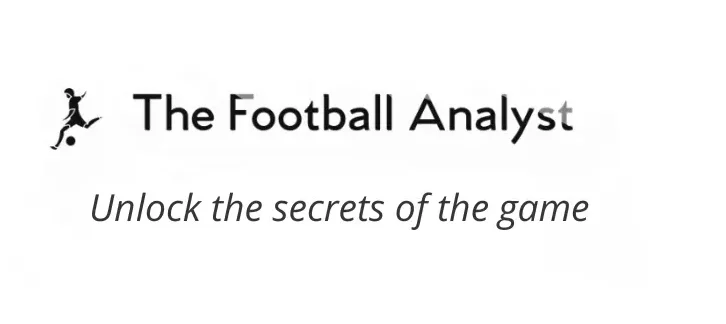In football, few aspects are as influential—and as underappreciated—as tempo. The speed at which teams build up their attacks influences their ability to control games, break defensive structures, and express their identity. But while we often describe teams as “fast” or “slow” in build-up, these labels are vague without data. That’s where Tempo Metrics come into play.
This article explores what tempo in football really means, how it can be quantified, why it matters tactically, and how elite coaches manipulate tempo as a strategic tool.
What Is Tempo in Football?
Tempo refers to the rhythm and speed at which a team progresses the ball during possession phases—especially during the build-up from deeper zones. It’s about how quickly the ball moves forward, how frequently a team changes the point of attack, and how rapidly players support the ball carrier with movement and passing options.

Unlike raw physical intensity, tempo is more about collective rhythm than individual pace. A slow-tempo team can still dominate with control and precision, while a fast-tempo team may be chaotic if transitions are poorly managed.
How Tempo Can Be Measured – Key Metrics
Measuring tempo objectively requires analyzing various aspects of a team’s possession and ball progression. Here are the most important metrics used by analysts to quantify how fast a team builds up:
1. Vertical Progression Rate
This metric calculates how quickly a team advances the ball forward toward the opponent’s goal. It can be expressed as meters gained per second or meters gained per possession phase. A high vertical progression rate indicates a team moves the ball swiftly upfield, often through direct passes or rapid dribbles. Conversely, a low rate suggests a slower, more patient build-up.
2. Passes per Final Third Entry
This counts the average number of passes a team completes before entering the opponent’s final third. A low number signals a more direct approach, with fewer passes taken to reach threatening areas. A higher number implies a possession-based style where the team patiently circulates the ball, probing for openings before advancing.
3. Directness Index
This metric measures the ratio of forward passes to lateral or backward passes. A high directness index means a team favors forward progression and verticality, while a low value reflects a preference for horizontal ball circulation and tempo control.
4. Average Time per Possession Phase
This looks at the average duration a team holds the ball within specific pitch zones, such as the defensive third or midfield. Shorter times indicate quicker decision-making and faster build-up, while longer times point to deliberate possession play, possibly to draw the opponent out or reorganize.
5. Progressive Pass Speed
This measures how quickly progressive passes—those that move the ball significantly closer to the opponent’s goal—are played after gaining possession or during the build-up. It reflects both player decision-making speed and the team’s overall urgency to attack.
Tempo as a Tactical Identity
Tempo is not just a statistical concept—it’s a cornerstone of tactical identity.
High Tempo Teams
Teams that build up rapidly aim to exploit transitional moments and attack disorganized structures. They value verticality, quick decision-making, and direct movement. This approach often includes:
- Fewer passes in the build-up
- Aggressive third-man runs
- Immediate vertical passes following regains
- A focus on wide overloads and early crosses
Such strategies suit teams that thrive in chaos, often embracing a high-risk, high-reward style. However, they can struggle against deep blocks if lacking in technical or positional patience.
Low Tempo Teams
Conversely, slower tempo sides prioritize control. They use the ball to manipulate opponents, stretching or compacting the block before exploiting gaps. Their approach typically includes:
- Longer sequences of passes
- Recycling play across the backline
- Creating numerical or positional superiorities before progressing
- Drawing pressure intentionally to free up space behind
These teams may appear passive but often use tempo changes as tactical traps, accelerating once the opponent steps out of shape.
Tempo Variation Within Matches
What makes top teams special isn’t just their tempo preference—it’s their ability to vary tempo.
Many elite sides don’t stick to one rhythm. Instead, they modulate their build-up speed based on match context, opposition behavior, and field location. This includes:
- Provoking pressure by slowing down, then accelerating past it
- Increasing tempo after winning the ball high
- Playing at low tempo when protecting a lead to manage the game
This manipulation of tempo creates a level of unpredictability. Teams that can switch between rhythmic control and sudden verticality are harder to defend against and more adaptable.
The Tactical Benefits of Tempo Mastery
Understanding and manipulating tempo provides several competitive advantages:
- Control Over Match Flow
Teams that dictate tempo dictate the terms of the game. Whether through suffocating possession or sudden surges, tempo management influences how opponents can react. - Exploitation of Defensive Weaknesses
Fast build-up can catch teams mid-transition. Slow build-up can exploit rigid blocks by pulling them apart. Tempo choices expose different vulnerabilities. - Enhanced Decision-Making
Tempo variation creates moments of pause or urgency, influencing the mental tempo of the opponent and giving your own players clearer cues for action. - Optimizing Player Strengths
A high-tempo strategy benefits explosive runners, while a slow-tempo structure favors technically composed players. Matching tempo to personnel unlocks their full potential.
Final Thoughts
Tempo is far more than just playing fast or slow—it’s a tactical language. Through Tempo Metrics, analysts and coaches can move beyond vague descriptions and understand how teams build up with intention. Whether through relentless verticality or methodical possession, every team expresses identity through tempo.
The ability to measure, manipulate, and master tempo is increasingly becoming a key differentiator in modern football. For analysts, it offers a new layer of insight. For coaches, it’s a tool to shape how their teams dominate the flow of the game.
